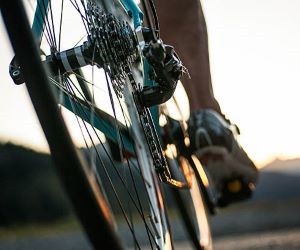Learn how to choose between clipless and flat pedals by comparing efficiency, control, comfort, and riding style to find the right setup for your needs.
HOW TO BET ON CYCLING CHAMPIONSHIPS IN TIME TRIAL RACES
Betting on time trial stages in cycling championships requires understanding the unique dynamics of this format. Unlike group stages, the time trial is a solo battle against the clock—every second matters. Bets typically focus on who will win the stage, podium finishes, or head-to-head matchups between specialists. This setup favors riders with top aerodynamic positioning, consistent pacing, and deep time trial experience. Sportsbooks adjust odds based on weather, gear updates, and rider condition. Knowing how to interpret these factors gives smart bettors a clear edge.

Understanding the time trial format
The individual time trial (ITT) is a stage where each rider starts alone at set intervals, aiming for the fastest time possible. There's no drafting, no peloton, no attacks—just raw power, aerodynamic efficiency, and pacing control. Time trial bets focus on predicting who will be fastest, which demands deep technical analysis.
Bookmakers typically offer markets like:
Stage winner (ITT)
Top 3 or top 5 finish
Head-to-head between specialists
Fastest team time in TTT events
Top time trialists like Filippo Ganna, Stefan Küng, or Remco Evenepoel dominate these stages through raw power, pedaling efficiency, and top-tier equipment. To bet effectively, you must follow key variables like wind patterns, course length, elevation profiles, and tech setups.
Why time trial betting is unique
Unlike most cycling bets, time trials eliminate pack dynamics or team strategy (except in TTTs). It's all on the rider—how well they can hold peak form alone against the clock.
Key factors for accurate betting
Time trials are so precise that even minor variables can shift results. That's why smart betting in this format demands laser-focused analysis on race-specific elements that directly affect performance.
Variables to evaluate
Course profile: A flat TT differs massively from one with climbs or technical turns.
Weather conditions: Crosswinds or rain can hurt riders starting later.
Start time: Critical in ITTs—conditions can shift from first to last starters.
Technical gear: Time trial bikes, aero helmets, skinsuits, and tire pressure all matter.
Current form: Check a rider’s recent TT performances and seasonal trend.
For example, if Ganna starts early and rising winds are forecast for later, that early slot could offer a big advantage. Odds don’t always adjust fast enough for these nuances—giving bettors an edge when paying attention.
Also, some riders excel in short TTs, others in longer ones. Understanding how each cyclist handles different distances adds serious value to your predictions.
Effective strategies for ITT betting
Betting on time trials in cycling championships isn’t just about picking the favorite. Winning strategies involve early insights, data comparisons, and smart risk management through varied bet types.
Tactics used by sharp bettors
Bet early if you spot value before weather forecasts are finalized.
Track specific TT training or prep events in the lead-up.
Use historical comparisons between rivals on similar profiles.
Diversify with combo bets—like podium + H2H selections.
Avoid going all-in on one rider if race-day conditions look uncertain.
A useful strategy is assessing how riders handle pressure. Some shine in national or world championships; others thrive in Grand Tours. This psychological layer is critical in time trials, where there's zero room for error.
In short, betting on time trials requires surgical precision but offers huge upside for those who master the details. Every second counts. Every insight matters.
YOU MAY ALSO BE INTERESTED






